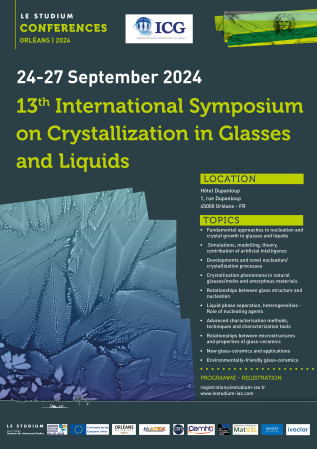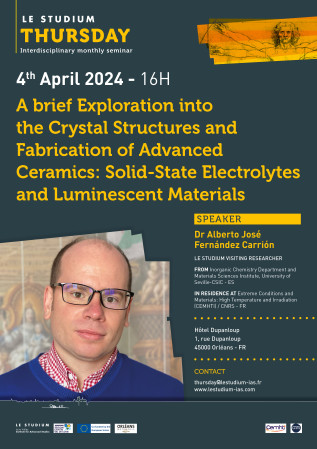Dr Alberto José Fernández Carrión

From
Inorganic Chemistry Department and Materials Sciences Institute, University of Seville-CSIC - ES
In residence at
Extreme Conditions and Materials: High Temperature and Irradiation (CEMHTI) / CNRS - FR
Host scientist
Dr Michael J. Pitcher
PROJET
Glass Ceramization Processing for Developing Solid-State Transparent Sodium Ion Electrolytes
The research for developing all-solid-state sodium batteries (ASS-SBs) spawned enormous interest during the last decade owing to the vaster and better distribution of sodium resources that diminish the manufacturing costs compared with the Li battery technology. In order to enhance the current efficiency of the state-of-the-art ASS-SBs, the employ of solid-state sodium ion electrolytes exhibiting total ionic conductivities larger than 10-3 S/cm at room temperature is essential. Nevertheless, the total conductivities are typically dropped by the grain boundaries presented in the most promising sodium polycrystalline electrolytes materials (beta-Al2O3, NaSICON-based compounds, and more recently honeycomb-layered sodium tellurates).
CERAMINA project addressees the previous challenges, proposing an innovative plan aiming at developing transparent solid-state sodium electrolytes to be implemented in all-solid-state sodium battery technologies. It is novelty relies on its fancy processing approach: full crystallization of glass precursors. The innovative technique is expected to yield optimized total conductivities thanks the complete absence of pores, thin grain boundaries and large grains. This set of microstructure features can minimize the large grain boundaries resistance. NaSiCON-based compounds as well as stuffed cristobalite and honeycomb-layered tellurate compounds will be explored owing to their compositions are compatible with glass preparation besides of good sodium ion bulk conductivities. In addition, by a careful control of the crystallization process, it is possible to retain the initial transparency of the corresponding glasses. Thus, the proposed project would lead to the development of a new kind of multifunctional material, gathering high sodium ion conductivity (>10-3 S/cm) and optical transparency.




